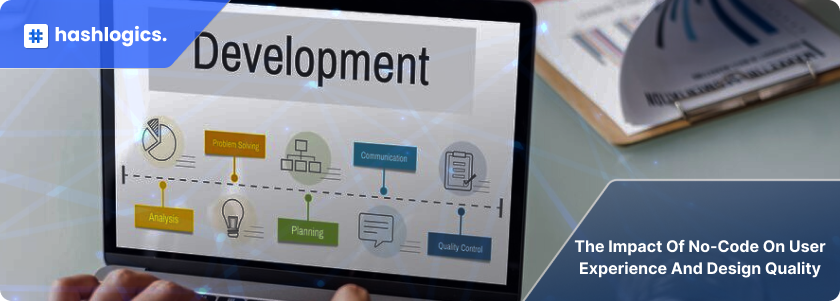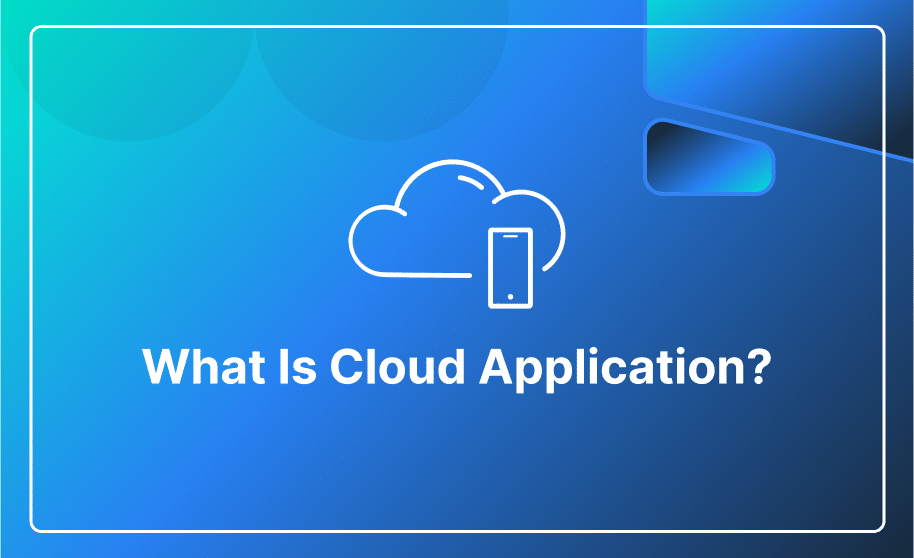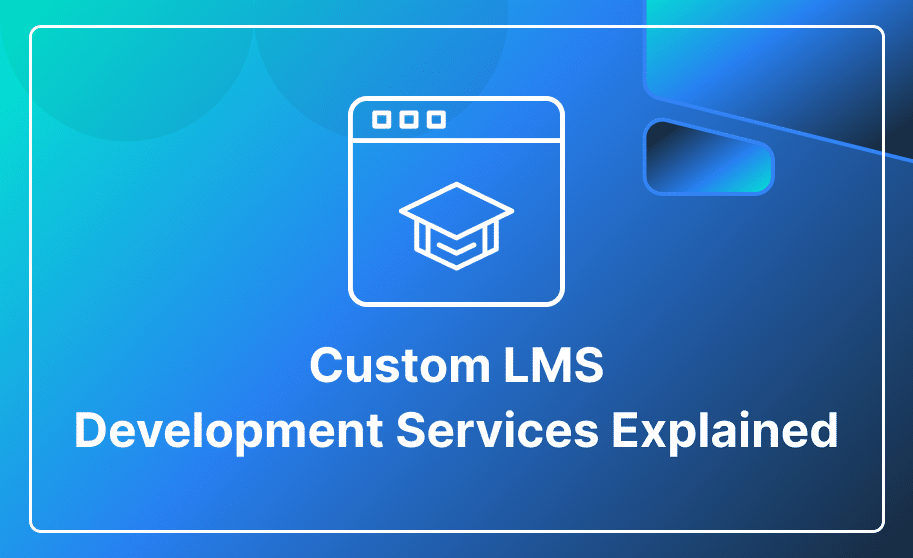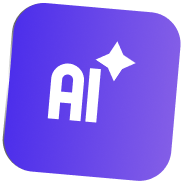No-code refers to an approach in software development that enables people to create and deploy software applications without a technical background or programming skills. A simple no-code definition is users can create apps and websites using visual drag-and-drop interfaces instead of traditional coding.
This blog post is a comprehensive guide on no-code, offering in-depth insights and practical knowledge to empower readers on their no-code journey.
What is No-Code Development?
No-code app development empowers users to learn how to create an application without code, with the potential to speed up and reduce the cost of software development. As a result, many businesses and startups are turning to no-code solutions to build customized apps from scratch.
No code replaces traditional coding, as this platform allows you to build innovative software applications through a user-friendly drag-and-drop interface without writing lines of code. The outcome is the same as the traditional coding, an operational web application that users engage with without knowing its creation process. However, using an intuitive visual building interface with no code tools speeds up software development and makes it more accessible to individuals without coding expertise.
It means that no-code tools have reduced technical obstacles that previously prevented businesses and entrepreneurs from creating their own apps. With a well-defined vision and objective for your app or solution, you no longer need extensive technical expertise and training for execution.
Comparing Low-Code and No-Code Development
Businesses now prefer Low-code and No-code platforms to expedite software development while reducing costs.
A low-code platform is used by IT professionals with coding knowledge to create complex custom applications, whereas no-code platforms enable business users to create applications without coding skills to address their business needs.
What is a No-Code Software?
No-code software is a type of development platform that allows users to create applications without traditional coding or programming skills. No-code software is used by business analysts, project managers, entrepreneurs, and other non-developer professionals who want to create custom applications to address specific business needs.
No-code software proves crucial across diverse business landscapes, catering to the unique needs of startups, eCommerce solutions, and enterprise-level challenges. In the realm of eCommerce, no-code tools make it easier to create user-friendly online stores, streamline checkout processes, and enhance inventory management. For enterprises, no code platform offers scalability and assists in making complex solutions without complicated coding. No-code development is particularly advantageous for small businesses with limited resources. It offers cost-effective solutions, rapid implementation, and the ability for non-technical staff to actively participate in the development process, driving innovation and efficiency within the resource-constrained environment.
What is a No-Code Developer?
No-code developers are individuals who practice programming without traditional coding by using no-code development platforms to build software applications. This approach allows individuals, including business users, analysts, entrepreneurs, and small business owners, to engage in programming activities without the requirement of traditional coding skills.

What is a No-Code Platform?
A no-code platform is a software development technology that uses drag-and-drop interfaces, visual workflows, and pre-built components, enabling the users to build, customize (to some extent), and deploy applications easily and swiftly.
The Definitive List of Top No-Code Platforms:
Nowadays, there are numerous no-code platforms. Some examples of popular tools for no-code app development include Bubble for full-stack app development and Airtable, designed for database management. Others are mentioned below:
- Squarespace
- Wix
- Bubble.io
- Webflow
- Flutterflow
- BigCommerce
- Zoho
- Make.com
- Adalo
- OutSystems
Target Audience for No-Code Platforms:
The target audience for the No-Code platform:
- Citizen developers
- Business professionals
- Entrepreneurs and Startups
- Small to medium-sized enterprises
- Non-Profit Organizations
The Versatility of No-Code Platforms in Various Applications
No-code platforms empower users to create a diverse range of applications, from websites and mobile apps to complex business software. Some types of applications that can be built using a no-code platform are mentioned below:
- Websites and Landing Pages.
- Mobile Applications (for both IOS and Android).
- E-commerce Platforms.
- E-Learning Platforms.
- Customer Relationship Management (CRM) system.
- Content Management System (CMS).
How to Build an App with No-Code?
Building an app with a No-code is a streamlined process. Users can use drag-and-drop functionalities, pre-built components, and visual interfaces to design and customize their applications. This method allows rapid prototyping and efficient development.
Pros of No-Code Development
No-Code offers numerous advantages, such as:
Accessibility:
No code makes it possible for anyone to create software, even without coding expertise. It allows people to create and launch their products on the web. It is inclusive and accessible – it only requires a laptop and internet connection to start building with no code.
Speed:
No-code prioritizing speed and efficiency by simplifying the complexities and difficulties of coding during the process of product-building.
Cost-Effectiveness:
Traditional software development can be expensive, as it requires skilled developers and resources. On the other, No-Code is cost-effective, as it allows individuals to create and design their products without the need to hire a developer or spend a lot of time learning how to code.
Flexibility:
No-code platforms offer flexibility, allowing for easy adaptation to evolving business needs. Users can make modifications and updates without the need for complex coding, promoting agility in response to changing requirements.
User-Friendly:
The visual and intuitive nature of no-code tools makes them user-friendly. This simplicity allows users to focus on their ideas and requirements rather than getting tangled in coding intricacies.
Reduced Dependency on IT:
No-code platforms allow businesses to create applications without heavily relying on IT departments. It reduces bottlenecks, enhances autonomy, and allows the IT team to concentrate on more complex tasks.
Promotes Innovation:
No-code development liberates creative energy by simplifying the technical aspects of app creation. It leads to greater innovation as individuals and teams explore and implement new ideas without being constrained by coding complexities.
Scalability:
No-code offers scalability, allowing businesses to start with small, basic applications and scale up as required. Scalability is crucial for companies undergoing growth or changes in their operational requirements.
Integration:
Many no-code platforms provide integration options, allowing users to connect their applications with a wide array of third-party services, databases, and APIs. It facilitates a more seamless workflow and enhances the overall functionality of the applications.
Cons of No-Code Development
While no-code offers multiple advantages, they also have some disadvantages:
Limited Customization:
No-code development tools may limit the extent to which apps can be customized, restricting the ability to tailor applications to highly specific or unique requirements. This limitation could be a challenge for businesses with intricate and specialized needs.
Performance Issues:
No-code solutions might face performance issues, particularly when handling large databases or complex operations. The abstraction of coding intricacies could lead to suboptimal performance under certain circumstances.
Security Concerns:
The simplicity of no-code tools might unintentionally introduce security vulnerabilities, given that users may lack expertise in implementing robust security measures. This poses a risk to sensitive data and overall system security.
Scalability Limits:
Although no-code platforms offer scalability, there might be limitations as applications grow in complexity or experience higher user loads. Scaling may face obstacles due to the inherent constraints of the visual development paradigm.
Dependence on Vendors:
No-code development often involves dependence on specific vendors’ platforms. This dependence could become problematic if the vendor faces disruptions, business closures, and changes in its offerings, potentially affecting the continuity of applications.
Limited Functionality for Complex Needs:
No-code tools may encounter challenges in fulfilling the demands of highly intricate processes or sophisticated functionalities. Businesses with complex needs may find that traditional coding becomes necessary for more advanced capabilities.
Risk of Obsolescence:
As technology evolves summarily, specific no-code platforms may become obsolete over time. Substantial investment in a particular no-code solution could pose a risk if it fails to align with emerging industry standards or trends.
Integration Challenges:
While no-code platforms frequently promote integration options, establishing seamless connections with legacy systems or specialized enterprise software may prove challenging. It could result in disruptions to workflows and compromise data consistency.
The Impact of No-Code on User Experience and Design Quality:
No-code development can significantly impact User Experience (UX) and design quality in various ways:
- No-code platforms facilitate quick prototyping, allowing the designers and developers to create interactive prototypes.
- No-code technology tools often feature visual interfaces that are user-friendly and intuitive. Designers can directly translate their vision into functional elements without extensive coding.
- No-code platforms often provide built-in accessibility features, ensuring that designers and developers can easily integrate accessibility standards into their designs.
- No-code development facilitates the integration of user testing tools, allowing designers to conduct usability testing and gather valuable insights directly within the development environment.

Future of No-Code Development
The future of no-code development holds promising transformations, determined by ongoing technological advancements and a growing demand for user-friendly solutions.
No-code development indicates advancements in Artificial Intelligence (AI) integration, advanced collaboration features, and a distinct emphasis on customization. These developments promise a future where users can harness more intelligent, collaborative, and personalized solutions, highlighting the continued evolution of no-code development in shaping the landscape of software creation.
Choosing the Right No-Code Platform
Choosing the right no-code platform is a crucial step in ensuring the success of your application development. To make an informed decision, consider the following factors:
- Clearly outline your project’s objectives, features, and functionality.
- Choose a platform with intuitive and user-friendly tools.
- Assess the scalability.
- Check for robust integration capabilities.
- Prioritize platforms with robust security measures.
- Research user feedback and reviews to gain insights into the experience of others.
Educational Resources and Learning Curve
For no-code developers, there is a variety of educational resources to facilitate skill development. No-code platforms often offer comprehensive documentation, tutorials, and interactive guides to help users grasp the fundamentals. Online courses and webinars both from platform providers and independent educators, contribute to a deeper understanding of no-code principles and applications.
One valuable resource for no-code developers is the convenience of no-code template download. These templates serve as ready-made foundations for various applications, allowing users to understand the structure and design principles of functional apps.

Conclusion:
No-code development is reshaping the software development landscape. No-code makes app-building easy and swift, even for those people who are not tech experts. While it has its pros and cons, the no-code tools promise a future where coding barriers are eliminated, leading to a more inclusive and efficient development landscape.
As a no-code development service provider, we have a track record of creating numerous custom apps tailored to diverse client needs. Contact us today for innovative and affordable no-code development solutions.
Our blog is your guide, catering to both coding enthusiasts and those looking for simplicity of no code.














